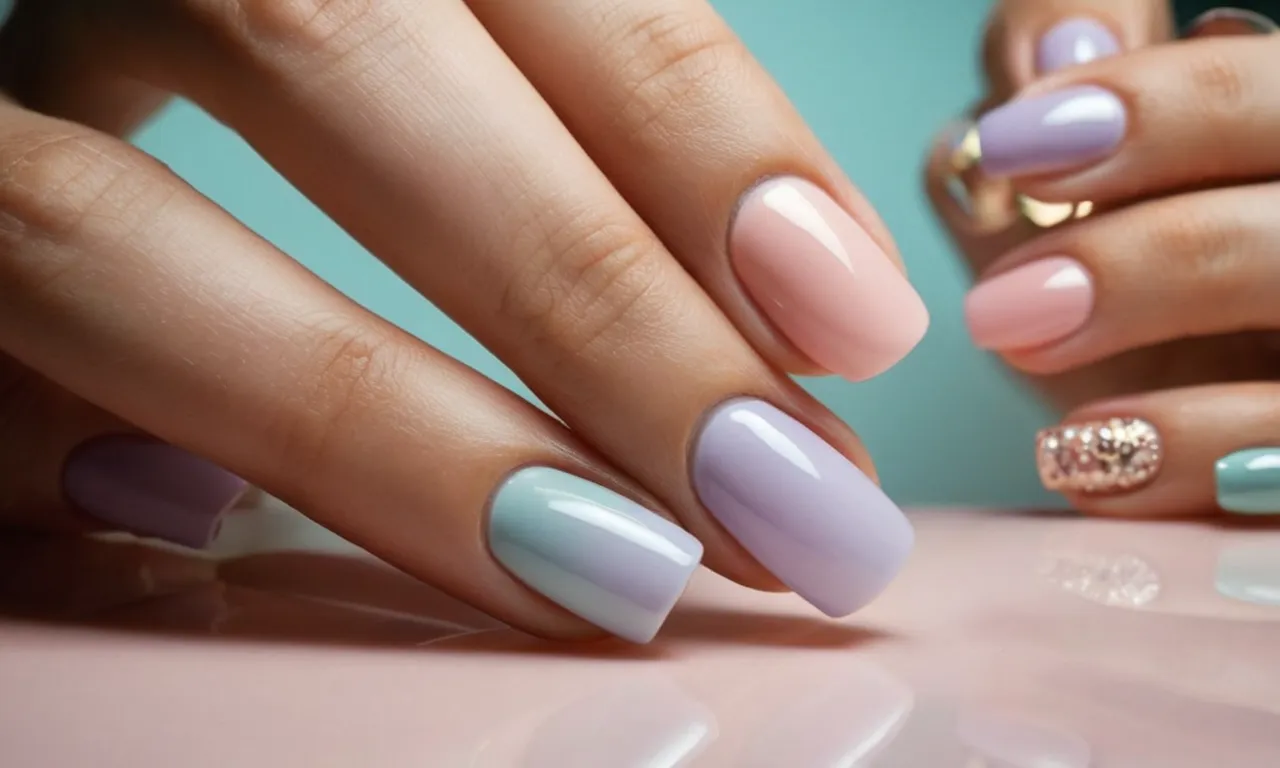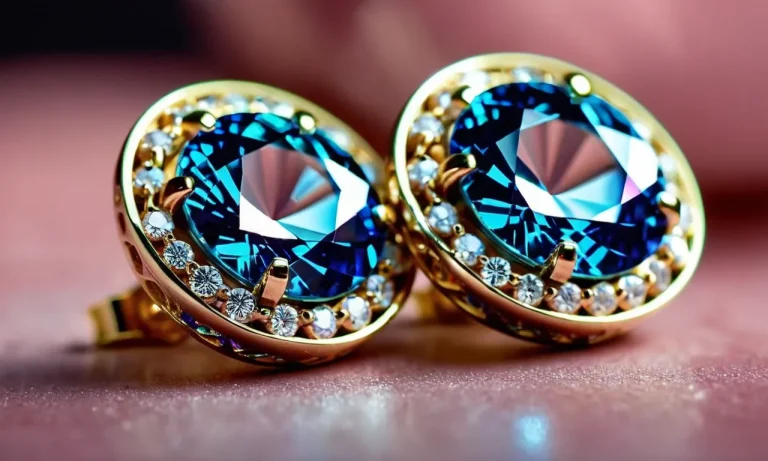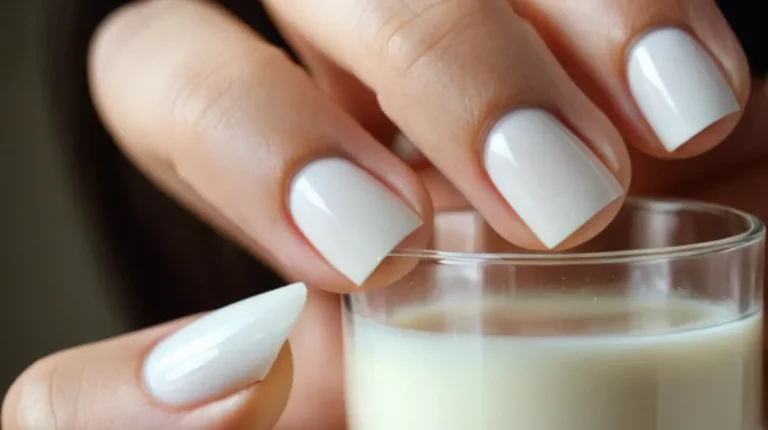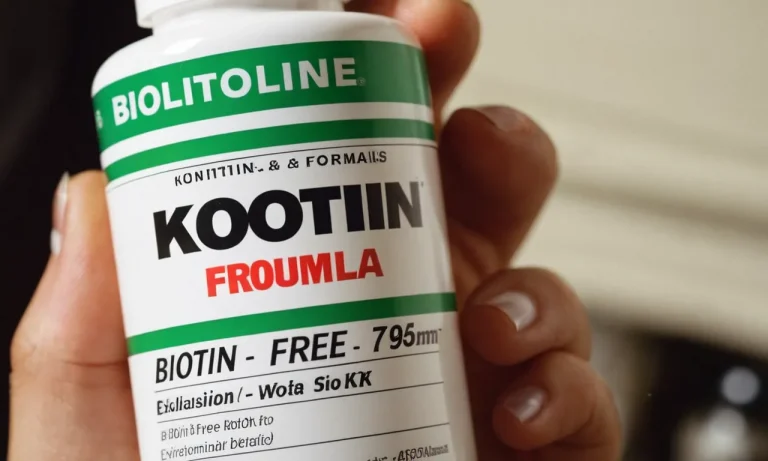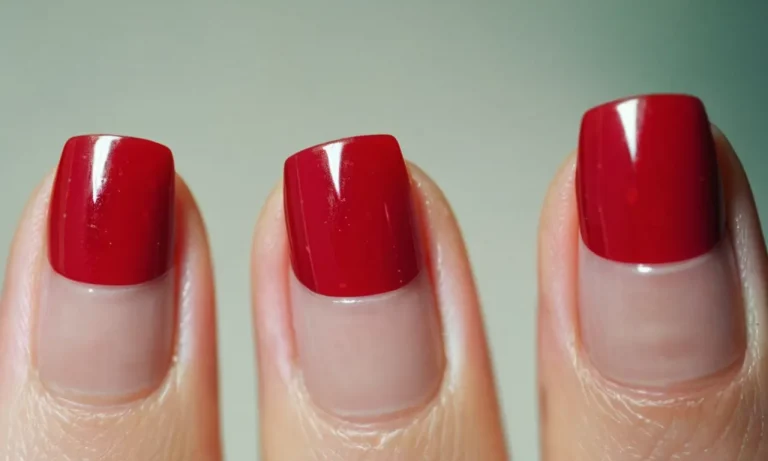Hard Gel Vs Soft Gel Nails: Which Is Better For You?
With hundreds of nail trends coming in and out of style, it can be hard to know which type of artificial nails are right for you. Gel manicures have become increasingly popular over the last decade for their damage-resistant properties and long-lasting wear.
But not all gel manicures are created equal. The two main types of gel polish used in salons today are hard gel and soft gel. So what’s the difference, and which is better?
If you’re short on time, here’s a quick answer: Hard gel nails are more durable while soft gel nails offer more flexibility. Hard gel is best for those wanting long-lasting nails that resist chipping and scratching. Soft gel provides a more natural look and feel but requires more maintenance.
In this comprehensive guide, we’ll break down the key differences between hard and soft gel manicures. We’ll compare the application process, longevity, appearance, feel, maintenance needs, removal process, and costs.
We’ll also overview the pros and cons of each type of gel polish so you can determine which option is right for your lifestyle and nail care preferences.
Application Process
Hard Gel Application
The application of hard gel nails takes more time and skill compared to soft gels. To start, the natural nail must be filed to remove shine and create a rough surface for the gel to adhere to. Cuticle work is also done to push back and remove any dead cuticle tissue.
Next, a nail dehydrator and primer are applied to prep the nail plate. Then, hard gel is brushed on in thin layers and cured under a UV or LED lamp between applications to set it. Most hard gels require 2-3 layers with curing in between to create an adequately thick, durable enhancement.
Precise application around the cuticles and sides of the nail is necessary to reduce lifting and allow nail growth. The entire process takes around 45-60 minutes. Hard gels last the average person 2-3 weeks before requiring fill maintenance. Filing and shaping complete the service.
Soft Gel Application
Soft gel application tends to be faster and easier for technicians compared to hard gel. After the natural nails are prepped, soft gel consistency allows it to be applied in just 1-2 thicker layers. Each layer is cured quickly under the lamp.
Application is also more forgiving around the cuticles since soft gel is flexible and won’t crack or lift as easily with growth. The service from start to finish takes approximately 30-45 minutes. While soft gels don’t last quite as long as hard gels on average, their durability of 1-2 weeks is still respectable considering the quicker and simpler application process.
Soft gels are just as easily filed and shaped to the client’s preference.
Durability and Longevity
Hard Gel Durability
Hard gels are incredibly durable and designed to last 2-4 weeks on natural nails. The rigid formulation creates an armor-like layer of protection over the natural nail that resists chipping, cracking, and peeling better than acrylics or soft gels.
Hard gels gain their toughness from a higher ratio of plasticizers to monomers during the chemical bonding process.
According to nail care statistics from Nails Magazine, over 80% of nail technicians said hard gels can last 4+ weeks with proper application and home care. The rigid finish is difficult to break or peel off accidentally.
While hard gels lack flexibility, the durable shell protects the natural nail underneath exceptionally well. Hard gels may feel thicker than soft gels, but create a protective shield against cracks and breaks. As long as they are properly soaked off, hard gels will not damage the nails.
Soft Gel Durability
Soft gels last approximately 2-3 weeks on most clients. The flexible chemistry provides a comfortable, lightweight finish that protects nails fairly well. However, soft gels lack the strength and resilience of hard gels.
Soft gels gain elasticity from less plasticizer content. Consequently, they dry with a softer, more flexible finish that bends rather than cracks under pressure. While still protective, soft gels chip and peel more easily compared to hard gels according to a survey published in NAILS Magazine.
Over 60% of nail techs said soft gels chip within 10-14 days.
Additionally, the pliable gel consistency makes bubbles and imperfections more likely during application. The soft finish can dent easily if bumped or snagged. However, many clients prefer the natural look and feel of soft gels over hard gels.
| Hard Gel | Soft Gel | |
|---|---|---|
| Durability | Very Durable | Less Durable |
| Longevity | 2-4+ weeks | 2-3 weeks |
| Protection Level | Maximum Protection | Moderate Protection |
In the end, clients wanting a longer lasting manicure with maximum protection should choose a hard gel system. However, those desiring a flexible, comfortable enhancement may prefer soft gels despite the reduced lifespan.
Appearance
Hard Gel Appearance
Hard gel nails have a smooth, glossy look that resembles acrylics. The gel is applied over the natural nail in thin layers and then cured under UV or LED light. This creates an ultra-hard, durable surface that lasts 2-3 weeks without chipping or peeling.
One of the main aesthetic benefits of hard gels is that they allow for very precise application, allowing the technician to sculpt beautiful nail shapes and designs.
Compared to soft gels and other nail extension options, hard gels offer superior shine and reflectivity. Their glass-like finish has an eye-catching wet look, making nails appear healthy and well-groomed.
This striking glossy quality comes from the top “sealer” layer of gel that goes over the colored layers underneath. The smooth surface also allows for immaculate polish application should clients wish to add it.
In terms of color, hard gels are available in every shade imaginable – nudes, pinks, reds, metallics, French white, and more. Technicians can use these colors alone or blend them to create ombré fades, marbled effects, and other intricate designs.
The cured gel strongly adheres these artistic elements to the nail.
Soft Gel Appearance
Soft gel manicures have a more natural, subtle finish. While still offering a beautiful shine, they lack the ultra-glossy hardness of sculpted hard gels. The gel consistency is thicker, allowing it to be applied in just 1-2 thin coats. Soft gels are still cured under UV/LED light.
However, the end result has a softer, more flexible feel that is closer to a regular manicure.
In terms of nail shaping abilities, soft gels do not allow the same level of customization as hard gels. Their thicker formulation makes intricate sculpting and designs nearly impossible. Instead, they offer a smooth, standardized application that follows the natural nail shape.
Many clients prefer this simplified approach that lets their natural beauty shine through.
When it comes to color options, soft gels offer all the staple polish shades. However, the variety of unique multidimensional colors seen in hard gels is lacking. Still, subtle sheers, crèmes, and French whites give soft gels an understated elegance perfect for any occasion.
| Appearance Factor | Hard Gel | Soft Gel |
|---|---|---|
| Finish | High-gloss, glass-like | Subtle sheen |
| Feel | Ultra-hard, durable | Flexible, gel-like |
| Shaping Ability | Fully-customizable | Limited adjustments |
| Color Options | Endless; multidimensional | Classic crèmes & sheers |
Feel on Nails
Hard Gel Feel
Hard gel nails provide a thicker, denser feel compared to soft gel. The polymerization process hardens the gel into a durable, rigid finish that firmly adheres to the natural nail. Many describe the feel of hard gels as tough and solid yet still flexible.
While hard gels last longer without chipping or cracking, some find the inflexible finish uncomfortable, especially those with longer nail beds. The rigid gel can pull at the nail tips with regular finger use and may feel heavy with embellishments like nail art or charms.
However, improvements in gel technology have allowed newer hard gels to feel strong yet not overly stiff. Many brands now offer “flexible hard gels” that aim to marry the strength of a hard gel with comfortable bendability.
Soft Gel Feel
In contrast to hard gels, soft gels have a flexible, bendable finish. The looser polymer structure and higher monomer content give soft gels more give and cushion. The gels nicely encapsulate the natural nail for a smooth, elastic feel that moves with the nail.
Soft gels are thinner than hard gels, resulting in a lightweight, natural feel many compare to a soft gel manicure. While not as durable as hard gels, the flexible finish is less likely to crack or lift with regular finger use.
Those with longer nails often prefer soft gels, as they curve with the nail tips better than rigid hard gels. However, soft gels may feel less sturdy overall and require more frequent fills to maintain strength.
Many love the comfortable, malleable finish of soft gels but recognize they lack the rock solid permanence of hard gels.
| Hard Gel | Soft Gel |
|---|---|
| Thick, dense finish | Thin, flexible finish |
| Very durable and rigid | Less durable but bendable |
| Can feel heavy and inflexible | Lightweight and movable |
| Pulls at nails tips with movement | Curves with nail tips |
| Longer lasting fill times | Needs more frequent fills |
When choosing between hard and soft gels, consider your lifestyle and nail length. Those with active jobs or hobbies may prefer soft gels for the comfortable flexibility, while hard gels work best for short nails needing maximum strength.
However, many brands now offer innovative gel formulas that blend the pros of both for durable, comfortable wear. Discuss your preferences with your nail technician to find the right gel system tailored for you.
Maintenance Needs
Hard Gel Maintenance
Hard gel nail extensions require more maintenance than soft gels. Here are some key points about caring for hard gels:
- Hard gels last longer on natural nails – up to 3 weeks between fills. But they are more prone to cracking or breaking if the nails are hit or snagged.
- It’s important to avoid picking at the edges of the gel polish or extensions. This can cause lifting and increase the risk of fungus or bacteria getting trapped underneath.
- Using cuticle oil daily helps keep the nail bed and surrounding skin from getting too dry and brittle.
- Gently file away any rough edges as needed to prevent snagging and cracks from worsening.
- Hard gels can feel thicker and more rigid than soft gels. Some find this uncomfortable. But others like the durable strength hard gels provide.
Soft Gel Maintenance
Soft gel nail extensions require slightly less maintenance than hard gel formulas. Here’s what to know about caring for soft gels:
- Soft gels tend to last 2-3 weeks between fill appointments. The product is more flexible and resilient.
- Lifting at the edges can still happen but may be less common than with hard gels.
- It’s important to avoid over-filing soft gels when doing maintenance. The extensions can thin out over time.
- Use cuticle oil daily to condition the nails and skin and prevent dryness issues.
- Some people prefer the lighter, more natural feel of soft gels. But they don’t offer quite as much strength as hard gels.
Following a regular fill schedule every 2-3 weeks will keep soft gels looking fabulous. Perform gentle maintenance filing and cuticle care in between appointments. Overall, soft gels may need slightly less work than hard gel manicures.
Removal Process
Hard Gel Removal
Removing hard gel nails requires breaking the bond between the gel polish and natural nail. This is most commonly done by soaking cotton balls in pure acetone and wrapping each nail to allow the acetone to penetrate the layers (source).
After 10-15 minutes, the bond should be weakened enough to gently scrape off gel residue with a cuticle pusher or plastic tool. This process needs to be repeated until all traces of hard gel are gone. Use nail clippers to trim off any remaining hard gel tips.
It’s crucial not to pick or peel at gel polish as this can damage the natural nail underneath. Nail damage increases the risk of fungus and infection. An electric nail file can be used to gently buff off gel layers instead of scraping for a potentially less damaging approach.
However, caution should still be taken not to overfile the natural nail.
The full hard gel removal process can take 60-90 minutes to avoid causing harm by rushing. It’s normal for nails to feel a little sensitive afterwards when the layers of product are stripped away. Regular application of a nourishing nail oil or butter can counteract dryness and support healthy nails.
Soft Gel Removal
Soft gel, also called gel polish, can be soaked off just like regular nail polish. Using pure acetone, saturate a cotton ball and place on each fingernail for 10-15 minutes until the gel begins to lift and peel (source).
Gentle pressure can then be applied with an orange wood stick to roll off gel remnants from base to tip while avoiding scraping motions across the nail surface.
Soaking soft gel nails requires less time compared to hard gels, averaging just 5-10 minutes per hand. Since soft gel isn’t bonded as firmly to nails, filing isn’t necessary as part of removal. Trimming off lifted edges with clippers can help speed up the process.
It’s normal for nails to appear thin and show imprints after gel removal. Using cuticle oil 2-3 times per day for a few weeks allows moisture to reabsorb and nails to grow out healthy again. Vitamin-enriched products speed up recovery.
| Hard Gel | Soft Gel | |
|---|---|---|
| Average Removal Time | 60-90 minutes | 10-30 minutes |
| Level Of Difficulty | Moderate | Easy |
| Aftercare Needs | High to avoid damage | Lower due to less trauma |
Cost Comparison
Hard Gel Cost
When it comes to the cost of hard gel nails, there are a few factors to consider. The initial hard gel application typically ranges from $30 to $80 depending on your location and the salon you choose. This cost covers the application of tips or forms, gel polish, and design if desired.
It takes around 1 to 2 hours for the initial full set application. Fill-ins are required every 2 to 3 weeks as the nails grow out and usually cost $30 to $55 per session. Since hard gels require drilling to remove properly, most salons charge between $15 and $30 for gel removal to avoid damage to the natural nails.
Soft Gel Cost
Soft gel nail costs are very similar to hard gels. Initial application of soft gel tips, polish, and designs generally ranges from $40 to $90. The service time is around 1.5 to 2 hours for a full set. Like hard gel, fill-ins are needed every 2 to 3 weeks as the nails grow out, with prices averaging $35 to $60 per appointment.
Soft gels are usually soaked off instead of filed down, so removal may cost $5 to $15 less than hard gels.
| Cost Factor | Hard Gel | Soft Gel |
|---|---|---|
| Initial Full Set | $50 average | $60 average |
| Fill-ins | $40 every 2-3 weeks | $45 every 2-3 weeks |
| Removal | $15 to $30 | $5 to $15 |
| Yearly Cost | $600 average | $540 average |
As shown in the comparison, both options come with considerable but comparable costs over time. While soft gels may cost slightly less on average, both achieve durable, beautiful nail looks that last weeks. In the end, it comes down to personal preference on finish and feel.
Either way, the joy of polished nails makes the cost worthwhile for manicure lovers.
Conclusion
When it comes to choosing between hard gel or soft gel nails, there are pros and cons to both options. Hard gel manicures are extremely durable and long-lasting, but the lengthy application and removal processes may be dealbreakers for some.
Soft gel polish is more flexible and faster to apply and remove, but requires more frequent infills to maintain the look.
For those wanting an ultra-strong manicure that resists chipping and scratching for 4+ weeks, hard gel is likely the best choice. However, if you value a natural appearance and feel along with easier maintenance, soft gel nails may be a better option.
Assess your own nail care priorities and lifestyle factors to determine if hard gel or soft gel is right for you.

